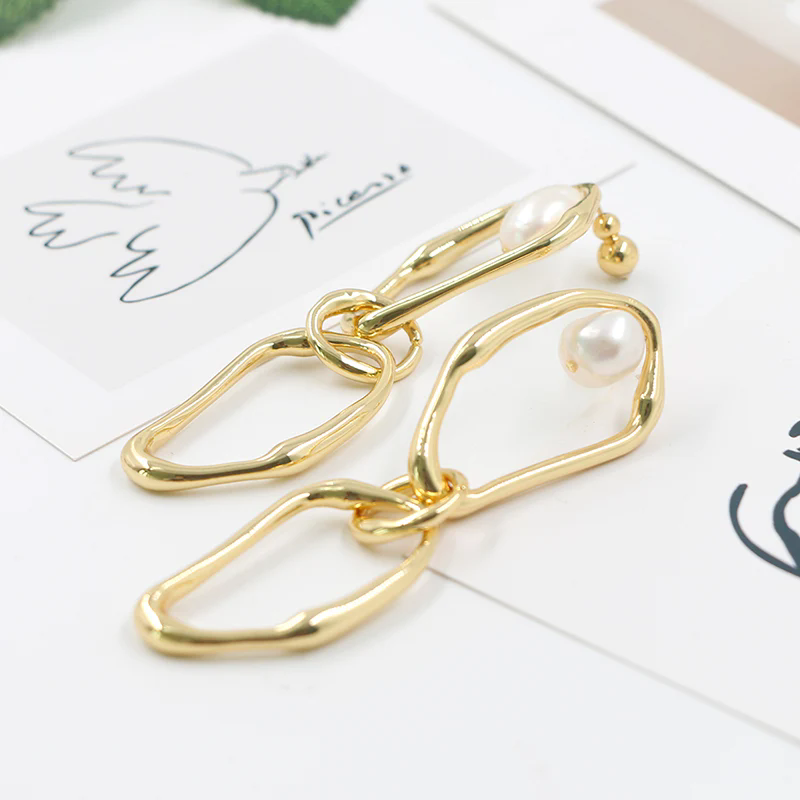Earrings: A Timeless Accessory for Every Occasion
2025-03-05
Earrings are one of the oldest and most beloved forms of jewelry. They have been worn by people across various cultures and civilizations for thousands of years, making them a timeless accessory. Whether simple studs or elaborate chandeliers, earrings have a unique ability to complement any outfit and elevate a person's style. In this blog, we will explore the significance of earrings, their types, materials, and tips for choosing the perfect pair.
The Significance of Earrings
Earrings are not only a fashion statement but also carry cultural and personal significance. Historically, earrings have been symbols of wealth, status, and beauty. In many cultures, the act of wearing earrings is seen as a rite of passage, marking milestones such as coming-of-age or marriage. They can also hold spiritual meaning, often associated with protection, strength, and self-expression.
In modern times, earrings are mainly worn for aesthetic reasons and are often used to express individuality. With so many styles and designs available, earrings can reflect a person's taste, personality, and creativity. Whether worn to complement an elegant evening dress or to add flair to a casual outfit, earrings have become an essential part of daily life and fashion.
Types of Earrings
1. Stud Earrings:
Simple and understated, stud earrings are a classic choice. They sit directly on the earlobe and typically feature a single gemstone, pearl, or metal design. Studs are versatile and can be worn for any occasion, from daily wear to formal events. Their minimalist nature makes them a favorite among people who prefer subtle elegance.
2. Hoop Earrings:
Hoop earrings are circular or semi-circular and can vary in size from small and dainty to large and bold. They are known for their ability to frame the face and add a touch of sophistication or fun to any outfit. Hoop earrings are available in various materials and designs, making them suitable for both casual and formal occasions.
3. Drop Earrings:
Drop earrings feature a design that hangs below the earlobe, typically suspended from a hook or chain. These earrings can range from simple drops to intricate designs featuring multiple stones or embellishments. Drop earrings are perfect for adding a touch of glamour and are often chosen for evening events or special occasions.
4. Chandelier Earrings:
Chandelier earrings are statement pieces that feature multiple tiers of stones, crystals, or metal elements, resembling the elegance of a chandelier. These earrings are often chosen for formal events, such as weddings or galas, and are perfect for those who want to make a bold fashion statement.
5. Ear Cuffs:
A more contemporary style, ear cuffs wrap around the outer edge of the ear. They don’t require piercings and can be worn along with other earrings, offering a unique, edgy look. Ear cuffs are ideal for people who want to try something new and adventurous in their jewelry collection.
6. Dangle Earrings:
Dangle earrings are similar to drop earrings but with more movement. These earrings can feature a single hanging element or a combination of decorative pieces that dangle from the ear. Dangle earrings add an element of fluidity and are perfect for adding a playful or elegant touch to any outfit.
Materials Used in Earrings
Earrings come in a wide range of materials, each offering different aesthetic qualities and durability. Some of the most common materials used in earring designs include:
1. Gold:
Gold is a timeless material that has been used in jewelry for centuries. Gold earrings are available in various shades, including yellow, white, and rose gold. Gold is known for its durability, luxurious appeal, and resistance to tarnishing.
2. Silver:
Silver earrings are popular for their bright, shiny appearance and affordability compared to gold. Sterling silver, which is 92.5% pure silver mixed with other metals, is often used for earrings, offering both strength and aesthetic appeal. Silver earrings are versatile and can be worn daily or for special occasions.
3. Platinum:
Platinum is a rare and durable metal that is often used in high-end jewelry. Platinum earrings are known for their hypoallergenic properties, making them a great option for people with sensitive skin. Their sleek, silvery appearance adds a sophisticated touch to any outfit.
4. Stainless Steel:
Stainless steel earrings are known for their affordability, strength, and resistance to corrosion. These earrings are often chosen for everyday wear and are available in various designs, from simple studs to intricate, contemporary styles.
5. Gemstones and Pearls:
Many earrings feature gemstones like diamonds, sapphires, emeralds, and rubies, adding color, sparkle, and luxury to the design. Pearls are also a popular choice for earrings, often used in both traditional and modern styles. Gemstone and pearl earrings are often seen as a symbol of elegance and class.
6. Wood and Resin:
For a more natural and bohemian look, earrings made from wood, resin, or natural materials have gained popularity. These materials are often used for bold, artistic designs that appeal to those with a more unique, nature-inspired sense of style.
How to Choose the Perfect Pair of Earrings
Choosing the right pair of earrings can sometimes feel overwhelming, given the variety of options available. Here are a few tips to help you make the perfect choice:
1. Consider the Occasion:
Think about where you will wear the earrings. For everyday wear, simple studs or small hoops are ideal. For formal events, statement earrings like chandelier or drop earrings can add a touch of glamour.
2. Match with Your Outfit:
The earrings you choose should complement your outfit. If you're wearing a bold, patterned dress, consider opting for more subtle earrings. On the other hand, if you're wearing a simple, solid-colored outfit, you can afford to wear larger, more eye-catching earrings.
3. Face Shape:
Different earring shapes can enhance different face shapes. For example, round faces often look great with angular earrings like long drops or hoops, while square faces can be softened with round or curved earrings.
4. Skin Tone:
Your skin tone can affect how certain metals and stones look against your skin. For example, gold earrings tend to look great on warm-toned skin, while silver is often more flattering on cooler skin tones. Similarly, certain gemstones may complement your skin tone better than others.
Conclusion
Earrings are more than just accessories; they are a way to express style, culture, and personality. From the classic elegance of studs to the dramatic beauty of chandelier earrings, there is a pair to suit every individual. Whether you're dressing up for a special occasion or adding a finishing touch to your daily outfit, earrings have the power to enhance your look and make you feel more confident. With so many styles, materials, and designs available, earrings continue to be a must-have in every jewelry collection.



